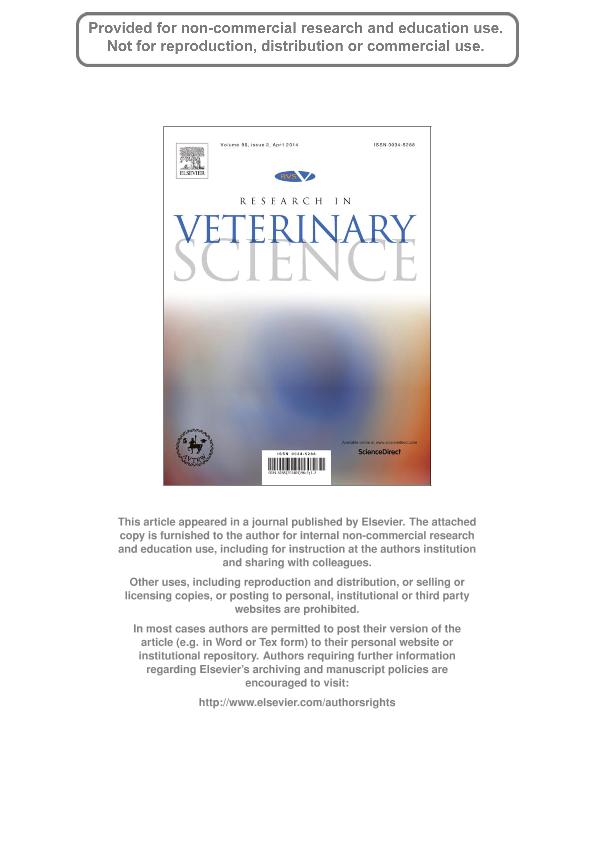Artículo
Chemical immobilisation of free-ranging Pampas foxes (Pseudalopex gymnocercus): Assessment of ketamine–xylazine and tiletamine–zolazepam combinations
Luengos Vidal, Estela Maris ; Castillo, Diego Fabián
; Castillo, Diego Fabián ; Baglioni, Joaquín; Manfredi, Matilde Claudia
; Baglioni, Joaquín; Manfredi, Matilde Claudia ; Lucherini, Mauro
; Lucherini, Mauro ; Casanave, Emma Beatriz
; Casanave, Emma Beatriz
 ; Castillo, Diego Fabián
; Castillo, Diego Fabián ; Baglioni, Joaquín; Manfredi, Matilde Claudia
; Baglioni, Joaquín; Manfredi, Matilde Claudia ; Lucherini, Mauro
; Lucherini, Mauro ; Casanave, Emma Beatriz
; Casanave, Emma Beatriz
Fecha de publicación:
04/2014
Editorial:
Elsevier
Revista:
Research in Veterinary Science
ISSN:
0034-5288
Idioma:
Inglés
Tipo de recurso:
Artículo publicado
Clasificación temática:
Resumen
Two protocols to immobilise free-ranging Pampas foxes for ear-tagging or radio-collaring were evaluated. One hundred fifteen foxes were injected with ketamine-xylazine (K-X) and thirteen with tiletamine-zolazepam (T-Z). The use of both T-Z and K-X combinations typically resulted in a smooth induction and recovery. In 86% of the cases K-X protocol was judged effective (mean ± SD, K: 10.7 ± 3.3 mg/kg, X: 1.0 ± 1.0 mg/kg) while T-Z protocol was judged effective in 92% of the cases (T: 3.6 ± 1.05 mg/kg, Z: 3.6 ± 1.05 mg/kg). The primary differences between the two drug combinations were that the time necessary for the complete recovery was longer with T-Z, and thermic problems were found more frequently with K-X. Additionally, our results suggest that thermic stress may be a relatively frequent complication for Pampas foxes. This study provides baseline data on some physiologic variables in Pampas foxes captured with different methods and drugs in field conditions.
Archivos asociados
Licencia
Identificadores
Colecciones
Articulos(CCT - BAHIA BLANCA)
Articulos de CTRO.CIENTIFICO TECNOL.CONICET - BAHIA BLANCA
Articulos de CTRO.CIENTIFICO TECNOL.CONICET - BAHIA BLANCA
Citación
Luengos Vidal, Estela Maris; Castillo, Diego Fabián; Baglioni, Joaquín; Manfredi, Matilde Claudia; Lucherini, Mauro; et al.; Chemical immobilisation of free-ranging Pampas foxes (Pseudalopex gymnocercus): Assessment of ketamine–xylazine and tiletamine–zolazepam combinations; Elsevier; Research in Veterinary Science; 96; 2; 4-2014; 371-376
Compartir
Altmétricas



